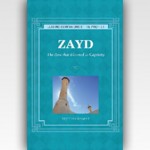THE WRITING, GATHERING AND COPYING OF THE QUR’AN
THE WRITING, GATHERING AND COPYING OF THE QUR’AN THE PERIOD OF THE PROPHET: THE WRITING OF THE QUR’AN
At the time when the first revelations began, the Prophet had no knowledge regarding the revelation of the Divine Scripts. In the fear that he may forget what was revealed to him, the Prophet attempted to repeat the sections of the verses which had already been sent before the revelation ended. Thereupon the following verse was revealed:
(O Prophet!) Move not your tongue to hasten it. Surely it is for Us to collect it( in your heart) and enable you to recite it (by heart). So when We recite it, follow its recitation; Thereafter, it is for Us to explain it.(al-Qiyamah 75:16–19)
From these verses, we can clearly see that Allah the Almighty guaranteed three points from the very beginning:
1.Gathering it in the heart as required,
2.Reciting it in the most favorable manner,
3.Accuracy in recitation and explanation.
Since the very beginning the Qur’an was preserved by the following three methods:
1.Written scripts: Following the warnings defined above and his experiences, the Prophet had attained sufficient knowledge regarding the mechanism of revelation. He would previously sense that a revelation was to be sent, and would call a scribe to write down the revelations. Almost forty of the Companions were honored to be scribes of the revelations, however among them Zayd ibn Thabit was given the title Al-Katib (The Scribe) because he was the one who recorded the most revelations.
One thing that we should empathize at this point, is that there was no previously known date or time for the forthcoming of the revelations. Therefore, the Prophet was prepared at all times. Even during the migration, the most difficult stage of his Prophethood, he ensured that there was a scriber and writing material with him at all times.
In fact, on the military expeditions the Prophet would have the scripts written during rests on the journey, and when the scriber finished, he would repeat it to the Prophet and correct any mistakes.
2.Memorization of the Qur’an: The Companions, and initially the scribers immediately memorized the revelations as they were sent and these verses were recited at least five times a day during the Prescribed Prayers. Although we cannot say all of the revelations were memorized by each of the believers, a vast majority certainly did learn them by heart.
3.Revision or public recitation (ardan): In view of the possibility of unintended mistakes during the stages of writing and memorizing the Qur’an, the Prophet eliminated any likelihood of this by taking a third measure. This is called the Ardan Method (revision); this means the process of controlling the written scripts by listening to someone who had memorized the scripts. This is how it was done: Every Ramadan the Prophet would recite the revelations sent during the period between the previous Ramadan to Jibril, and then before the congregation in the Masjid an-Nabawi (the Prophet’s Mosque) so the people could control their written scripts and verses they had memorized. This was carried out twice during the last year before the Prophet’s death, this was known as ard al-ahir.
However, the question ‘was there a need for such frequent control when the Qur’an was under Divine security?’ may come to mind. This is true, the preservation of the Qur’an was guaranteed, but we can say this was practiced as an assurance for the future generations who could doubt the authenticity of the Qur’an due to their weakness in faith, and to eliminate any apprehensions regarding the subject.
Therefore, this practice is objective evidence for both believers and disbelievers regarding the authenticity in the compilation process of the scriptures during the period of the Prophet, and after his death.
Akgul, Muhittin. Tafsir: An Introduction to Qur’anic Exegesis. Tughra Books Press, Inc. 2013
Related Posts
- September 03, 2014
- 0 Comment









